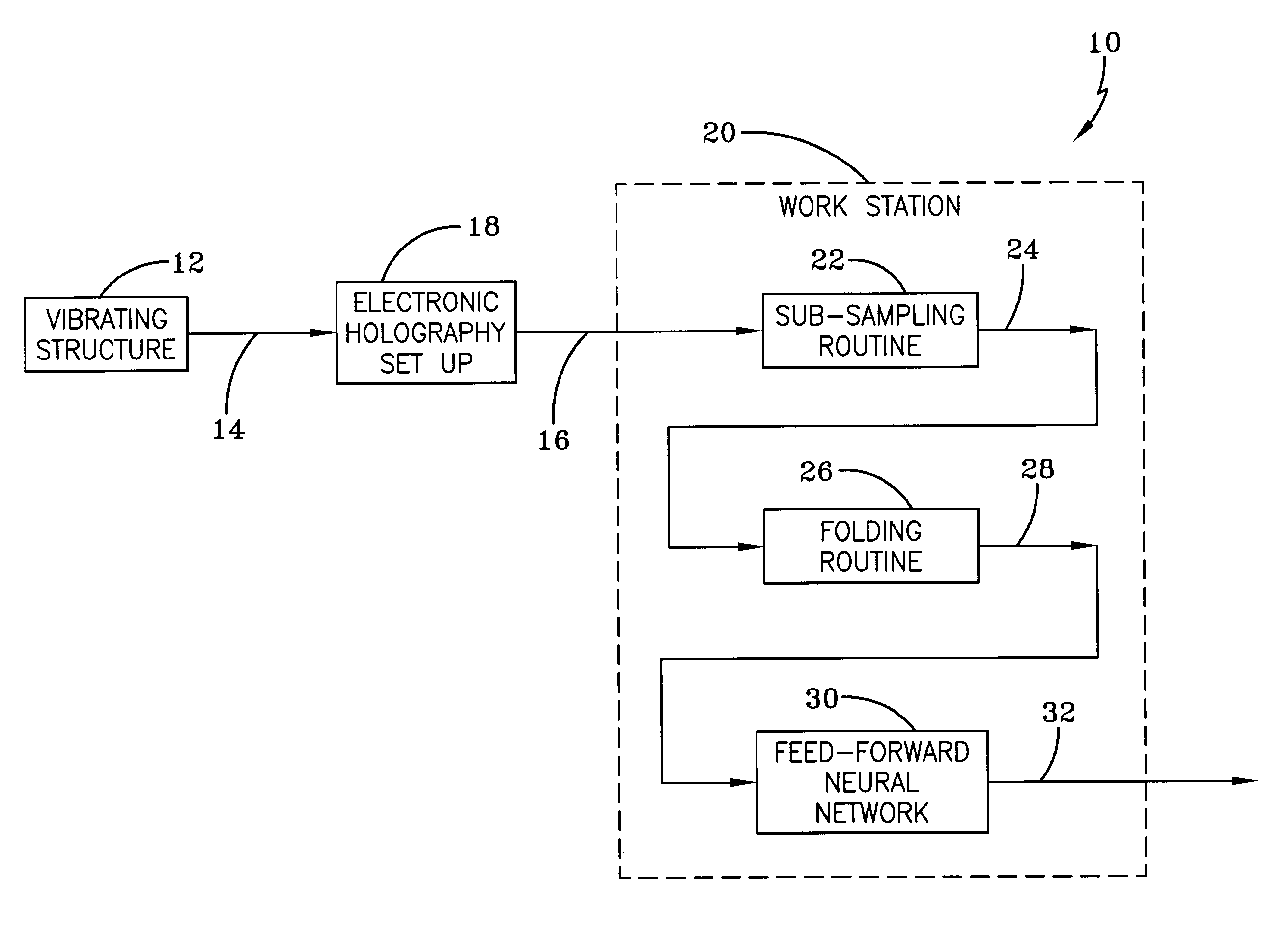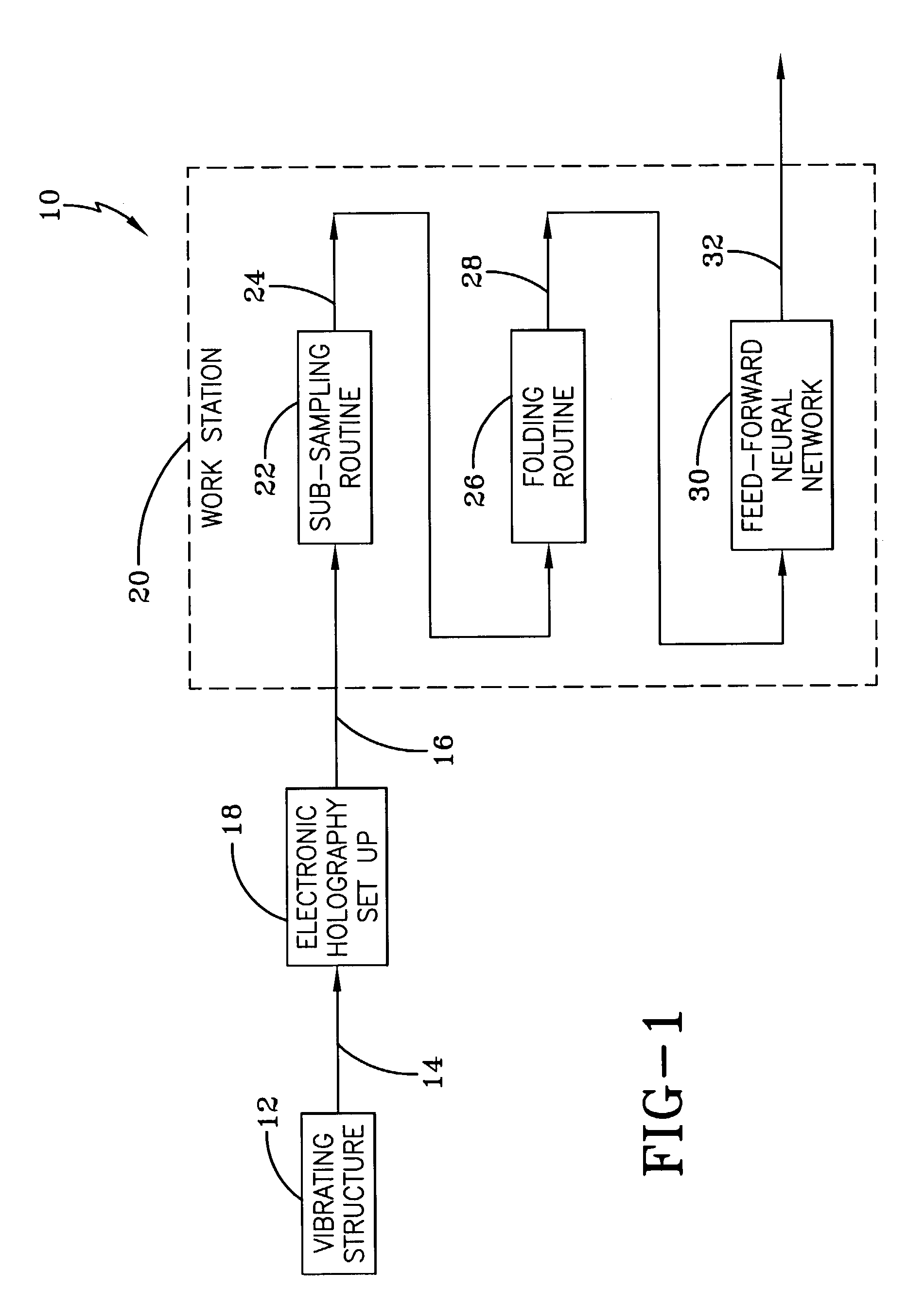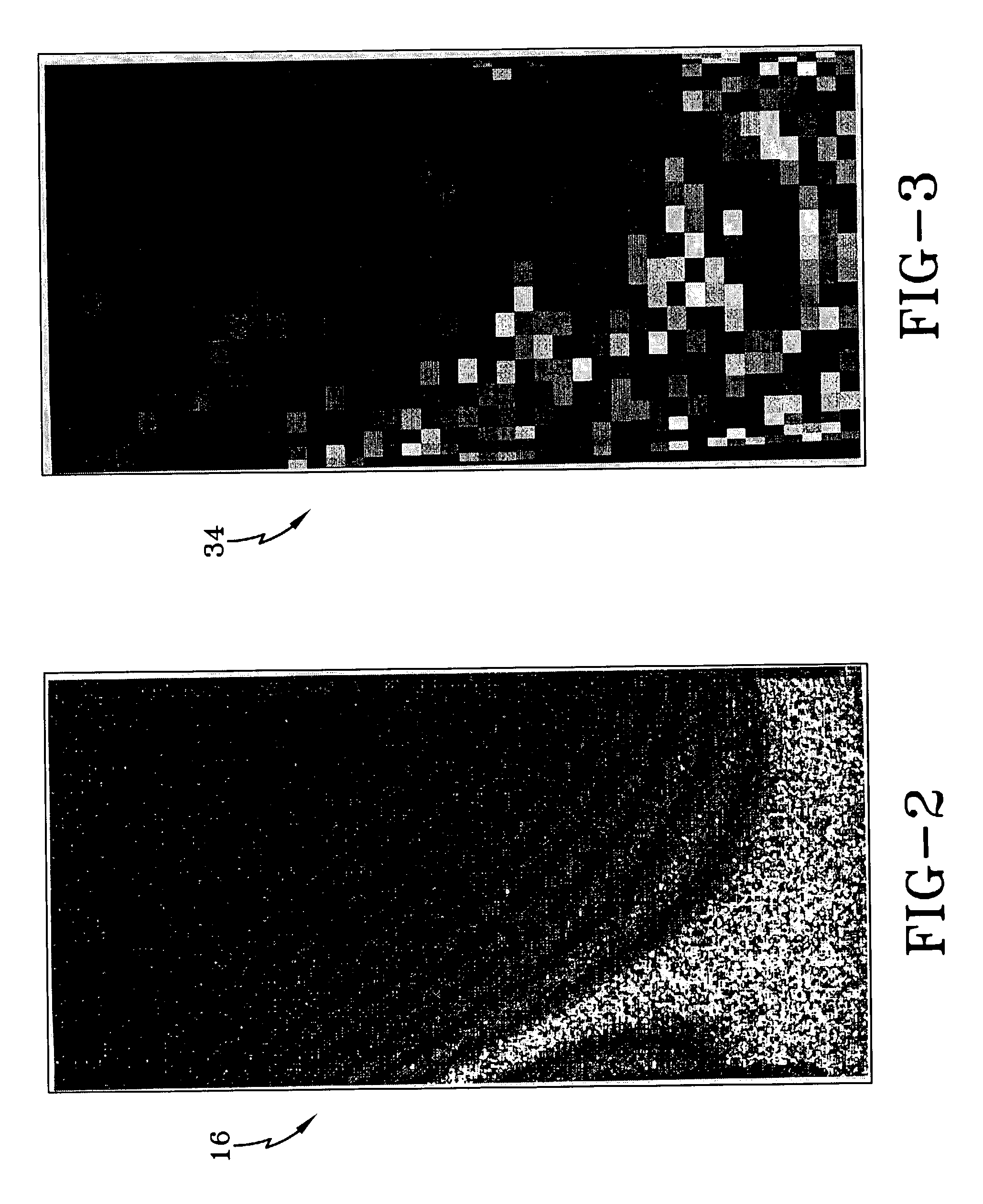Optimization of training sets for neural-net processing of characteristic patterns from vibrating solids
a neural network and characteristic pattern technology, applied in the field of detection of faults in vibrating solids, can solve the problems of inability to achieve the sensitivity desired for non-destructive evaluation procedures, the tendency of associated neural networks to overtrain, etc., to improve the sensitivity improve the training of associated neural networks, and improve the effect of training to detect damag
- Summary
- Abstract
- Description
- Claims
- Application Information
AI Technical Summary
Benefits of technology
Problems solved by technology
Method used
Image
Examples
Embodiment Construction
[0041]Referring to FIG. 1, there is shown a block diagram of a method 10 of the present invention that uses an artificial neural network for detecting structural damage of a vibrating structure 12. The method 10 is particularly suited to provide training for the neural network and involves a training record. A training record consists of an input and an output. The input is a characteristic pattern recorded of a vibrating structure 12 excited to vibrate at very low amplitude. The structure 12 is excited to vibrate in a normal or resonant mode, and yields a mode shape. A hologram pair 16 is generated using electronic or television holography set-up equipment 18. Television holography set-up equipment 18 is available commercially in more than one form as is known in the art.
[0042]As used herein, mode shape is meant to represent the vibration-displacement amplitude distribution of a structure vibrating in a normal mode or to represent the accompanying characteristic pattern. Characteri...
PUM
 Login to View More
Login to View More Abstract
Description
Claims
Application Information
 Login to View More
Login to View More - R&D
- Intellectual Property
- Life Sciences
- Materials
- Tech Scout
- Unparalleled Data Quality
- Higher Quality Content
- 60% Fewer Hallucinations
Browse by: Latest US Patents, China's latest patents, Technical Efficacy Thesaurus, Application Domain, Technology Topic, Popular Technical Reports.
© 2025 PatSnap. All rights reserved.Legal|Privacy policy|Modern Slavery Act Transparency Statement|Sitemap|About US| Contact US: help@patsnap.com



